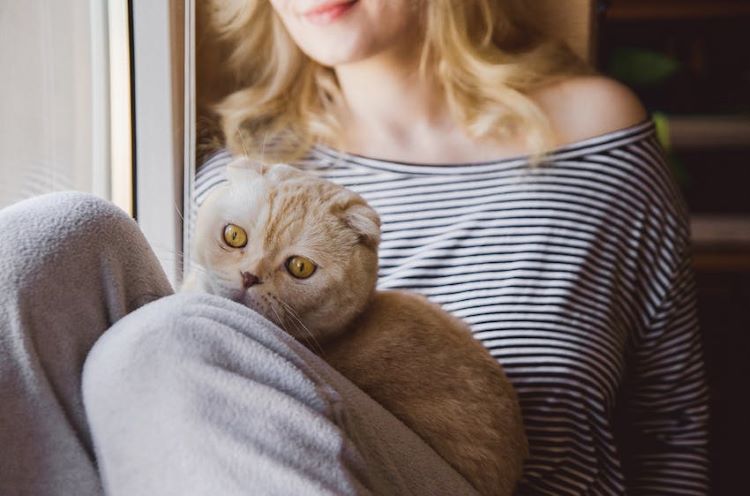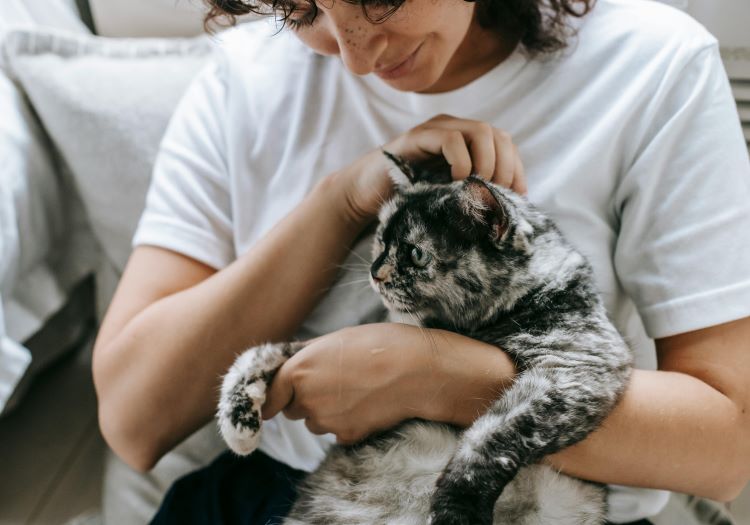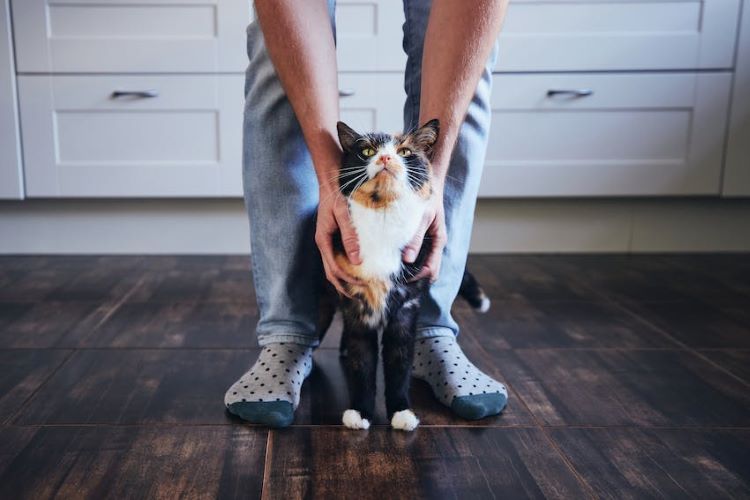Ready to help treat your pet to a healthy life?
5 Common Health Problems in Adopted Cats
By : Kelli Rascoe & Trupanion Staff | Updated Mar 26, 2025

Over two million cats are adopted each year (according to Shelter Animals Count statistics). And if you’re among the new pet owners, you’re likely excited about all the fun new experiences cats bring with them. But you’ll need to think beyond just playtime and snuggle sessions — some of these new encounters could be in the form of veterinary health issues. Newly adopted cats, particularly those from shelters and rescues, are at risk of a wide range of conditions even if they appear healthy and fine upfront.
This can be a scary topic to think about, of course. Nevertheless, it’s important to be in tune with your cat’s health at all times. By becoming better informed with the health issues commonly found in adopted cats, you are better equipped to practice prevention and get your pet the medical care they need in a timely manner.
We sat down with veterinarian Dr. Caroline Wilde, DVM, to create this guide to recognizing and managing common feline health problems in adopted pets.
5 common health problems in adopted cats every pet owner should know
If you’ve recently become a new pet owner — or even if you are a tenured cat owner — here are the common cat health problems Wilde says every cat parent should be aware of.
1. Diarrhea
Diarrhea is a common health problem in cats of all ages. It could be indicative of a wide range of underlying health issues, so getting to the root of the problem is key.
“If a newly adopted feline has soft stool, it’s important to always take the pet to the veterinarian, where they can check a stool sample, and make sure it’s not parasite-related,” Wilde says. “There can be a wide variety of reasons why your feline friend is experiencing gastrointestinal issues.”
Common contributing factors of diarrhea include:
- Stress
- Food intolerance / allergy
- Dietary changes
- Parasitic infestations
If you feel your furry friend is experiencing signs of discomfort and gastrointestinal upset, please seek veterinary care. Consider notating when your cat has stomach pain and signs of diarrhea (for instance, during feeding time) to help your vet find the cause of the pain.
2. Ringworm
Though not an actual worm despite its name, ringworm is an infectious skin disease that is a common health problem in cats. And, according to Wilde, it’s especially seen within animal shelters and rescue organizations. Ringworm is treatable, but it can spread very easily and should be taken seriously in any household.
“It’s important to take [cats] showing signs of ringworm to the vet as soon as possible,” Wilde says. “Ringworm is zoonotic, meaning it can be transmitted to people and other pets in the home.”
Ringworm can be tough to spot due to your cat’s fur (especially when it comes to cats with long or dense fur coats). But if you do spot skin issues like scabs, bald spots, or scaling appear on your new cat, seek treatment with your veterinarian right away.

3. Respiratory infections and eye issues
Respiratory infections and eye issues (specifically concerning the membranes around the eyes) are both common illnesses in adopted cats, and they are often tied together. Eye discharge and inflammation can be caused by a respiratory infection and be accompanied by blepharospasm — squinting or twitching of your cat’s eyes.
Essentially, a number of issues could cause these infections. For example, respiratory infections can be transmitted through bacteria, viral, or trauma. Although this is a common health problem in cats, the severity of the infection can be more extreme in younger cats and kittens.
“If they progress, they can become very sick, very fast,” Wilde says. “It’s important to take any eye issues very seriously. In addition, the veterinarian will want to check the eyes for trauma by staining them.”
If your cat keeps trying to scratch at their face in the meantime, consider using an e-collar or an alternative to help them heal faster. That said, always seek out veterinary attention first instead of trying to address any pet health issue on your own.
4. Lack of appetite
Keeping your cat happy and healthy is a top priority for pet owners. Naturally, a factor of that is keeping your pet well fed. Granted, not all cats have a large appetite, and the key is understanding why they don’t want to eat. Is your cat eating enough?
While any changes in appetite should be noted and brought to the attention of your vet, Wilde says that a cat not wanting to eat can be surprisingly common in adopted cats for a wide variety of reasons. It’s important not to wait to seek veterinary attention.
Why your cat may not be eating
Stress is a common cause behind newly adopted cats not having an appetite. After all, your pet is adjusting to their new home and environment. They could also be experiencing food intolerance or may simply be having a tough time getting used to a different food than what they were eating in the shelter (or before). Last but definitely not least, an underlying health issue could be taking away your cat’s appetite, especially if it affects the gastrointestinal tract.
“Any issues regarding how much a cat is eating (too much or not enough), can be a cause for concern, and should be discussed with a veterinarian,” Wilde says.
5. Litter box issues
It’s no surprise that cats can be a bit finicky about their pet space, especially when it comes to the litter box. But not using it or experiencing other issues can mean something is wrong. The good news is that many times this issue has more to do with your cat’s environment rather than their actual health.
“It’s important when bringing a new cat into the home, to help facilitate their litter box right from the start, as improper elimination or urinating outside the litter box is sadly a very common reason for cats to be relinquished.” Wilde says. “The rule of thumb is that the number of litter boxes in the house should be the number of cats plus one. For example, three litter boxes in a two-cat home.”
If your cat continues to experience litter box issues or shows an abrupt change in behavior (i.e. suddenly not using the litter box when they previously had no issues), seek veterinary attention. As with many other cat behavioral issues, a medical cause could be at the root of it.

Common health problems in cats can appear at any age
Common health problems in cats can affect any adoption cat or kitten. These issues can be seen despite age, breed, or gender. If you feel your furry friend is experiencing signs of any pain, discomfort, or changes in behavior, seek veterinary care as soon as possible.
The importance of the first vet visit for your cat
The first vet visit for your cat is incredibly important for the health of your pet. Only a licensed and qualified veterinarian will be able to test for diseases, give vaccinations or boosters, provide wellness care and tips, and relay a treatment plan if any medical concerns are encountered. This initial appointment also gives you an opportunity to ask any questions you might have about your new furry friend. In other words, the first vet visit is a vital part of getting your newly adopted cat set up for positive health outcomes in the future.
Protect the health of your feline friend
As established, common health problems in cats are seen throughout animal welfare organizations, and they can sometimes pop up in recently adopted pets. The most important factor is that you seek care for your cat if anything seems amiss. By keeping your pet’s wellness in check and establishing good routines, your cat will be on the road to recovery in no time.
It's also a good idea to explore your cat insurance options if you haven’t already done so. A good cat health policy can help protect both your cat and your budget against new and unexpected medical issues.
Interested in getting to know your furry friend even better? Check out When Do Cats Stop Growing?
